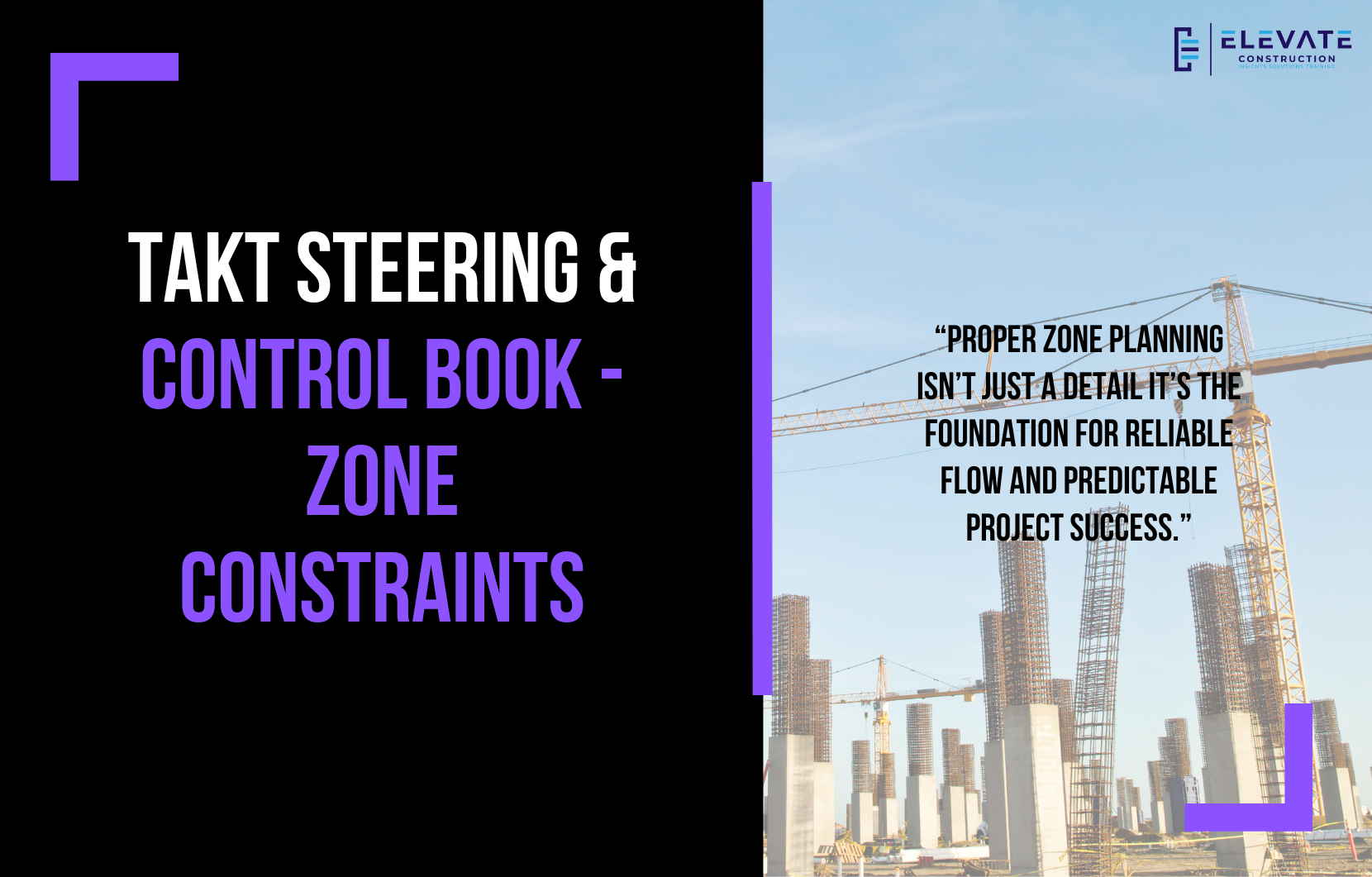Building the Right Tracks for Construction Flow
Zone constraints also known as track constraints are all about the spaces your trades flow through on a project. Just like a train needs the right track to move efficiently, crews need properly designed zones to keep the project on pace. These constraints primarily involve the configuration of phases, area zones, and microzones, as well as the spatial challenges that impact flow.
Wrong Number of Zones
The number of zones on a project is critical. Too few zones, and you’ll create areas that are too large with insufficient buffers. Too many zones, and you’ll end up wasting time, space, and resources.
The solution? Use a TACT calculator to simulate different scenarios, consult with trade partners, and identify the right balance. With the correct number of zones, you’ll achieve smoother flow, proper buffers, and the right pace for your trades.
Not Planning for Physical Constraints
Every project has physical or logistical limitations that can disrupt flow if not addressed early. Common issues include:
- Worker access points
- Material access points
- Hoist leave-outs
- Loading zones
- Stair towers
- Temporary elevators
- Exterior sections not ready for interiors
- Laydown areas
If these are ignored, trades will face repeated disruptions and lose faith in the system. To prevent this, mark all constraints on zone maps, design your first and second passes, and clearly communicate comeback areas during preconstruction.
Misshaped or Complex Zones
Uneven or misshaped zones can create bottlenecks. If one zone takes significantly longer than the others, the entire flow will slow down.
Instead of designing zones by area, design them by work density. Monitor trade performance as they move through zones and rebalance when necessary. Proper leveling ensures that no single zone becomes the limiting factor for progress.
Why Zone Constraints Matter
Zone constraints represent the “tracks” of your construction train. Without well-prepared and leveled tracks, the train of trades will slow down or stop altogether. Just like building a real railroad requires clearing terrain, blasting through mountains, and laying level tracks, construction requires thoughtful planning of zones before crews arrive.
Key Takeaway
Zone constraints are often invisible but deeply impactful. By planning the right number of zones, accounting for physical constraints, and leveling zone complexity, project teams can create smooth “tracks” for their trades. Proper zone planning isn’t just a detail it’s the foundation for reliable flow and predictable project success.
If you want to learn more we have:
-Takt Virtual Training: (Click here)
-Check out our Youtube channel for more info: (Click here)
-Listen to the Elevate Construction podcast: (Click here)
-Check out our training programs and certifications: (Click here)
-The Takt Book: (Click here)
Discover Jason’s Expertise:
Meet Jason Schroeder, the driving force behind Elevate Construction IST. As the company’s owner and principal consultant, he’s dedicated to taking construction to new heights. With a wealth of industry experience, he’s crafted the Field Engineer Boot Camp and Superintendent Boot Camp – intensive training programs engineered to cultivate top-tier leaders capable of steering their teams towards success. Jason’s vision? To expand his training initiatives across the nation, empowering construction firms to soar to unprecedented levels of excellence.
On we go

